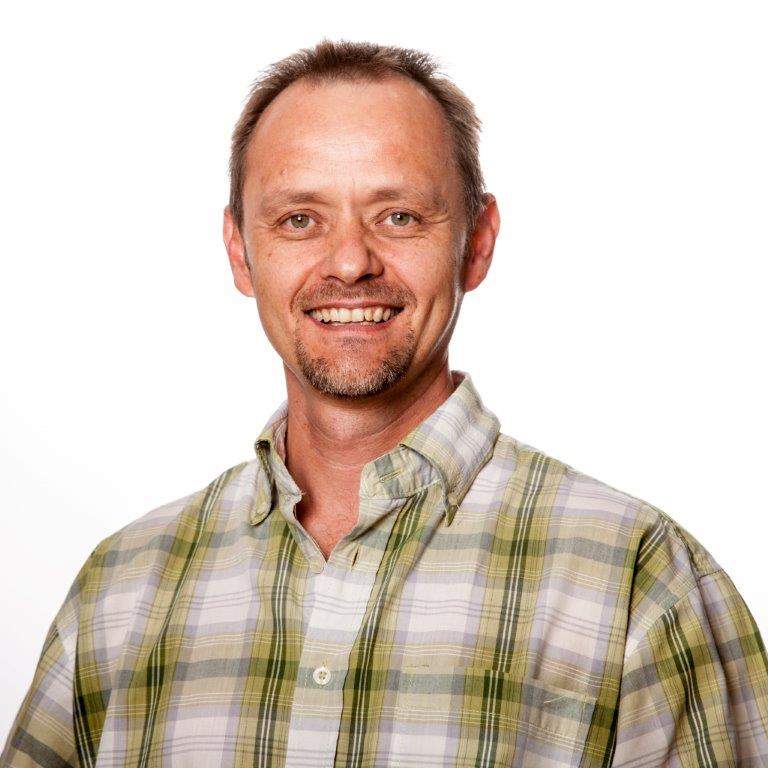Gerrit

Gerrit Visser has been with Royal HaskoningDHV since March 2006, when he joined to head up the bridge team and build it into something bigger.
Today, he is still looking after that same bridge team, ensuring success on the interesting projects they work on.
“One bridge is not the same as the next, which is quite stimulating and challenging. On the draughting side, we have been keeping up with developments starting with AutoCAD 2D, followed by AutoCAD 3D and then Inventor. Currently, we are using REVIT to produce 3D models.
The next step in bridge design is to incorporate programming in the computational design process. So, it's interesting to work in a constantly changing environment. You can’t sit still and let the grass grow under your feet,” he laughs.
Gerrit says he isn’t one for boring, office-bound jobs. “I decided on this career way-back-when as a youngster. I went for aptitude testing that indicated either accounting or engineering. I asked, “Which one would not be in an office the whole day?” So here I am!
Gerrit is particularly fond of working on concept designs. “I think it's the most creative part of the bridge design process. After that, we get stuck into the detail of the designs, number-crunching, codes and things, so for me, the concept design is the most enjoyable part.”
“The most rewarding part, however, is when we build pedestrian bridges out in the rural areas. It’s a truly humbling experience when something as simple as a bridge from one side of the river to the other has a huge impact on peoples’ lives. It’s not like you're giving them a fancy car; it's just a piece of concrete for them to walk on from one side to the other… but now they can get to their jobs and shops and things like that. So, I also enjoy talking to the people and seeing how it’s changed their lives.”
Gerrit’s favourite project was the Ha Mafutho pedestrian bridge in Lesotho. “This one had the biggest impact on me because it was in the middle of nowhere. It was a suspension bridge, and we had to design it like Lego pieces. Materials could only be transported down to the site on the back of a donkey. You really had to think outside the box; it’s not the conventional way of designing a bridge. When we did the project, we sat with the client’s design engineers, leaving them with the tools they needed to design more of these kinds of bridges. During construction, we had the local contractors there as well, and we trained them on business basics and so on. So, with that project, we used every opportunity to improve people's lives—from the locals who will use the bridge to the designers and construction workers.”
“We submitted the Ha Mafutho project for the Steel Awards, winning in our category and also winning the overall award. The next morning I had breakfast with the client and he said, ‘You and your team are doing God’s work.’ That really stuck with me.”
Gerrit says that RHDHV has changed him personally by allowing him to grow continually.
“The environment they create for you is one where you can push yourself beyond your limits. Even in the work we're doing now with the programming, they’re allowing us to use all these digital tools, giving us the hardware and the software - almost like a blank canvas so that we can explore as far as we can. It’s quite amazing to be able to work for a company where they want you to do new and different things. So, on a personal level, in a company that's continually challenging you, you don't just become a bridge engineer and sit back and know it all. Tomorrow there’s something new to learn, and the day after that, it's something else again.”
Gerrit says that he also enjoys how close the bridge team is. “We’ve managed to keep the work-family ethos going. You spend nine to ten hours a day in the office with your colleagues, so they really do become your work family. And those relationships you've built within the team also see you challenging one another to learn more, and you share whatever you've learned in a caring and supportive way. It’s quite amazing to work with a bunch of people you know have your back, and we look after one another.”
Gerrit says that what some people might not know about him is that he still builds Lego.
“I like the old Lego vintage cars—the Beetles and other VWs—and then I've got a whole set of construction vehicles, from a Volvo truck to a front-end loader. I’ve got the whole Architect range. If it’s got a bridge in it, I’ve built it,” he laughs. “I find it very relaxing and therapeutic.”